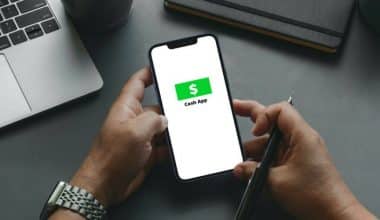Anyone who requires a visual budget to keep on track can benefit from using a cash envelope system. This technique will not only assist you in controlling your spending but it has also been demonstrated that cash envelope budgeting may result in spending less money!
Even while it will not work for everyone, the envelope money system can be an excellent solution for anyone who needs to know exactly where their money is going.
We will go into detail about the cash envelope system and how to utilize it to manage your budget.
What is the Envelope Budget System?
The cash envelope budget system focuses on discretionary spending, or, more specifically, the money that is left over after paying for needs and fixed costs like rent.
The system divides expenses into groups using real or digital envelopes.
A specific sum of money is allotted to each category; how the amounts are determined is explained below. When all of the cash in each envelope has been spent, you are no longer allowed to spend anything until additional money is added, which is normally at the beginning of a new month or pay period. Divide your money into equal portions for each category, and only allow yourself to spend until the cash in each envelope is gone.
When it comes to expenses that change monthly based on your spending patterns, like groceries and eating out, envelope budgeting works best. These are the best kinds of expenses to make into spending categories and incorporate in envelope budgeting.
When creating this type of budget, you might include the following categories:
- Groceries
- Entertainment
- Dine outside
- Gas Clothes
- Items for personal care
- In charge of subscriptions
- Miscellaneous
The envelope system of budgeting can be effective for people who prefer to see how their money is being used. Furthermore, this approach may be modified to work with online spreadsheets and other budgeting programs, which is fantastic news.
How Does the Envelope Budget System Work
Nothing indicating when to quit is one of the reasons we overspend. Your cash envelopes are used in this situation. They are a fantastic tool that will aid in your budget adherence. How to use them is as follows:
#1. Consider the budget areas for which a cash envelope is required.
Using the envelope system is a smart solution for spending that frequently exceeds your budget. Consider things like food, drink, entertainment, travel, and apparel.
The following are the budget categories that I find most useful, but you get to choose which ones receive an envelope:
- Groceries
- Restaurants
- Gas
- Medicine/pharmacy
- Grooming and makeup
- Vehicle upkeep
- Personal Entertainment
- Gifts
#2. Determine the size of your budget.
If you are aware that you frequently overpay on things like birthdays, baby showers, and impulsive purchases, consider setting a monthly spending cap. Decide how much you want to spend on groceries and then stick to it if they are always eating into your cash app.
Make sure the budget amounts are understood by both you and your spouse. And if you are single, find a partner who will hold you accountable for staying within your budget. It could be a trusted friend, relative, or coworker who supports the money ideas you are implementing.
#3. Make cash envelopes for each category of the budget and fill them.
Let us say your monthly grocery budget is $500. Take $250 from your bank account and place the cash in an envelope when you receive your first paycheck of the month. Groceries should be written on that envelope. Do the same process once more and place the $250 in the envelope when you receive your second paycheck. Your $500 food budget is good for the entire month.
Make sure you bring enough money to pay for your groceries during that trip. Take some items out of the cart and put them back in if you took $150 in cash and your total was $160. I realize that it is difficult. However, it is preferable than exceeding your grocery budget and blowing the entire month’s budget.
On the other hand, make sure to return any spare change to the cash envelope if you do not use all of the money from the grocery envelope when you go shopping.
The only time money is taken out of the grocery envelope—and I mean absolutely not a penny—is to purchase food at the shop. Turn your car around if you accidentally left the envelope at home while grocery shopping.
#4. Only use the money that is in each cash envelope.
Remember: Your money is gone when it is gone! If you do not have enough money to go to the supermarket but want to, look in the refrigerator for leftovers. Try the pantry test. Check your cupboard to see if there is anything you can use to make dinner without going to the shop. This is a fantastic method to become very deliberate about your purchasing patterns.
Benefits of Cash Envelope Budget System
- It helps you stay on course.
- Discipline is upheld.
- It makes you answerable.
- It makes it difficult to spend excessively.
Is Cash Stuffing and the Envelope System the Same?
The term “cash stuffing” may be familiar to you if you follow TikTok or Instagram. Cash stuffing is the process of dividing up your monthly cash into envelopes designated for different budget categories. Does that ring a bell? Yep! The envelope system and cash stuffing are interchangeable terms. The phrase has recently gained popularity as a result of some people’s preference to record their budgeting process and share it online.
However, cash stuffing functions similarly to the envelope system: You cash out your paycheck at the beginning of the month and use the money to finance each envelope. For instance, if your beauty category has a $35 budget, you would put $35 in cash into that envelope. Pretty easy!
What if I pay a portion of my bills online?
The problem with the envelope system is this: It functions better when you enter a store to make a purchase in person. Using the envelope system is quite effective when grocery shopping, eating out, getting a haircut, or getting your oil changed.
Even though it becomes a little more challenging, you can still utilize online cash envelopes for Internet transactions. Put your planned amount on the outside of the envelope, and stay under that limit when shopping online. Like you would if you were balancing a checkbook, keep track of your spending and write it down on the reverse of the envelope.
What if My Cash Envelope Runs Out of Cash?
Do not take money from the other cash packets, please. It can be very alluring to move cash from one category to finance another when using the envelope system.
Consider a scenario in which you spent all the money in your restaurant envelope. Do not be astonished if an inner voice prompts you to take your clothing envelope.
Always keep in mind that using cash envelopes is meant to help you manage your spending and adhere to your budget.
Consume leftovers rather than go out to eat if you run out of restaurant money. Limit your journeys or start carpooling to work if you see that your petrol money is disappearing more quickly than you anticipated. When the envelopes are running low, think outside the box to make your money stretch.
Why Not Address Emergencies?
Call an emergency budget meeting to go over your options if a crisis arises in the middle of the month or if anything happens that leaves you with no alternative but to rearrange your cash envelopes.
If you are married, consult your partner to choose the best course of action, make necessary adjustments to the budget, and come to an agreement. It must involve both of you; it is a shared choice. If you are single, you might also discuss the figures with your accountability partner to get their opinion.
Is the Cash Envelope Budget System Secure?
Welcome to the twenty-first century, the era of ApplePay, PayPal, credit and debit cards, and… cash?
Not so quickly with the last one.
Nowadays, most transactions are completed by quickly swiping a card or pressing a few buttons on a mobile device rather than reaching for your wallet and sorting through a stack of banknotes. Let us face it, a lot of people are uncomfortable carrying cash, particularly millennials who grew up in a society that rarely used it.
What should you do, then, if you decide to use the envelope system?
How to Carry Cash Safely
Obviously, experienced pickpockets have existed for as long as there has been money, so protecting money is not a new problem.
Here are some suggestions for hiding the money:
- Placing money all across your body
- Concealed textile pockets or soft zip-top pouches that are sewed into garments
- Tucking the money between the shoe’s footbed and bottom
- Money belts, messenger or cross-body bags that can be worn across the front of your body, and bra pockets
More typical queries about the envelope system include:
How Much Cash Should I Carry?
The money you will need to make the “budgeted” purchase, which is the answer. A little planning and consideration beforehand will help you bring the appropriate amount because the envelope system compels you to think carefully about your purchases. Once more, we are talking about conscious, not impulsive, purchases.
What Should I Do If I Have Extra Money at the End of the Month?
Oh, this is a good one. If your budget is met, it is acceptable to celebrate and treat yourself—within reason, of course. Why not enjoy a great latte or a luxury dinner? You may remain more motivated with rewards. The money can also be carried over to the following month, giving you the option of having a sizable grocery budget. Another cause to rejoice is that.
What Happens If I Have No More Money in One of the Envelopes?
This is crucial. It is not appropriate to “borrow” from the other envelopes. That undermines the goal of the system. Here is a creative answer: Feel some pain.
Controlling your expenditure and assisting you in adhering to your budget are the goals of the envelope system. You might need to make some cuts or do without until your next payment if one envelope is running low.
You may have underestimated how much is actually required each month for some expenses, so you are permitted to make one adjustment to your estimates. Do not make it a practice to move things about.
Alternatives To The Cash Envelope Budget System
The fundamental idea behind the envelope system may be replicated without carrying cash: putting aside a specified amount for necessities like groceries.
Here are a few substitutes:
#1. Clipping System
Okay, so this is not particularly novel or different from the envelope system, but it is a little less cumbersome. You use clips rather than envelopes so you can really see the divided money. It fits into your wallet more easily. To assist differentiate the groups, you may utilize various hues and patterns. But once the money is gone, it is gone—just like the envelopes.
#2. Mvelopes
App for budgeting Many of the principles of the envelope system is used by Mvelopes. It enables you to budget money in advance and spend only what is left in a chosen category. When money is running low, you have three options: do not make a purchase, buy something less expensive, or transfer funds to another category.
#3. Goodbudget
Website and mobile application Customers can divide their money up into numerous categories and keep track of their expenditures using Goodbudget. Consumers can upgrade to a more complex system for an additional cost.
The majority of websites and applications would often advise using the 50/30/20 system of budgeting. In other words, allocate 50% of your after-tax income to necessities (like rent and groceries), about 30% to wants (like travel and eating out), and roughly 20% to savings and debt reduction.
Conclusion
Although you can substitute virtual envelopes for actual ones, the envelope budgeting system is a cash-oriented way of approaching budgeting. It can be laborious, but it makes budgeting and seeing how you spend money very tangible. And You risk giving up the benefits and security of using a credit or debit card if you pay with actual cash.
- How to Send a Letter: Guidelines, Costs, and Other Mailing Options
- STANDARD MAIL: How Long Does Standard Mail Take
- GMAIL LOGO: Does Gmail Have a New Logo?
- Best 10+ Grocery Delivery Service: Top Services to Work For
- Benefits of Eating Healthily in College






